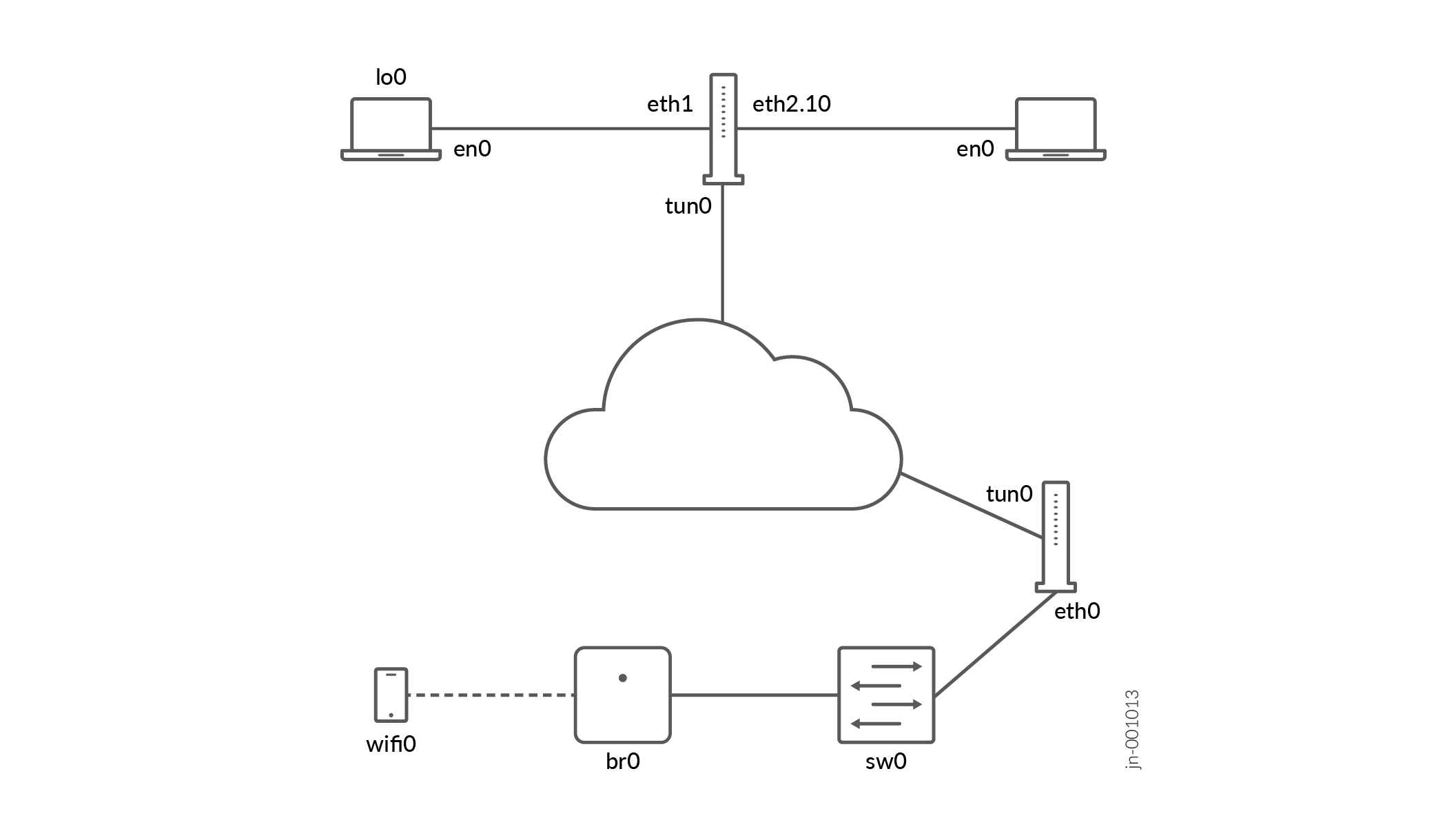Overview
Describes the various types of network interfaces and their characteristics.
A network interface—also known as network interface controller, network interface card, or network adapter—is a hardware component that is designed to enable computers to access an interconnection network for communication and synchronization purposes. An interface acts as a port where a host sends or receives packets. A network interface typically provides two distinct kinds of interfaces: one for the computer (host) side and another for the network side. The network interface translates the protocol of the host interface to the network protocol and vice versa, and converts between the different physical media.

Types of Interfaces
You can classify a network interfaces as follows:
-
Physical Interfaces—A physical interface is a connection between a system and a network. It consists of a software driver and a connector to which you connect network media.
-
Logical Interfaces—A logical interface abstracts a main interface and captures its physical characteristics. A VLAN uses logical interfaces to create a virtual network.
-
Management Interfaces—Management interfaces are the primary interfaces for accessing the device remotely. You can use the management interface to access the device over the network using utilities such as
sshandtelnet. You can configure the device from anywhere, regardless of its physical location. SNMP can use the management interface to gather statistics from the device. -
Loopback Interfaces—A loopback interface is a virtual, software-based interface on a network device that is always active and reachable. It's used to test and debug network connectivity, and to assign a permanent IP address to a device. The loopback interfaces provide a stable and reliable way to access and manage network devices.
-
Serial Interfaces—A serial port is a serial communication interface through which information transfers in or out sequentially one bit at a time.
-
Discard Interfaces—The discard interface is a virtual interface that silently discards packets as the packets arrive.
-
IP Demultiplexing Interfaces—Demultiplexing (demux) interfaces are logical interfaces that share a common, underlying interface.
See the following table for more information:
| Topic | Link |
|---|---|
| Damping Interfaces | Damping Interfaces |
| Interface Ranges | Interface Ranges for Physical Interfaces |
| Loopback Interfaces | Loopback Interfaces |
| Serial Interfaces | Serial Interfaces |
| Discard Interfaces | Discard Interfaces |
| IP Demultiplexing Interfaces | IP Demultiplexing Interfaces |
